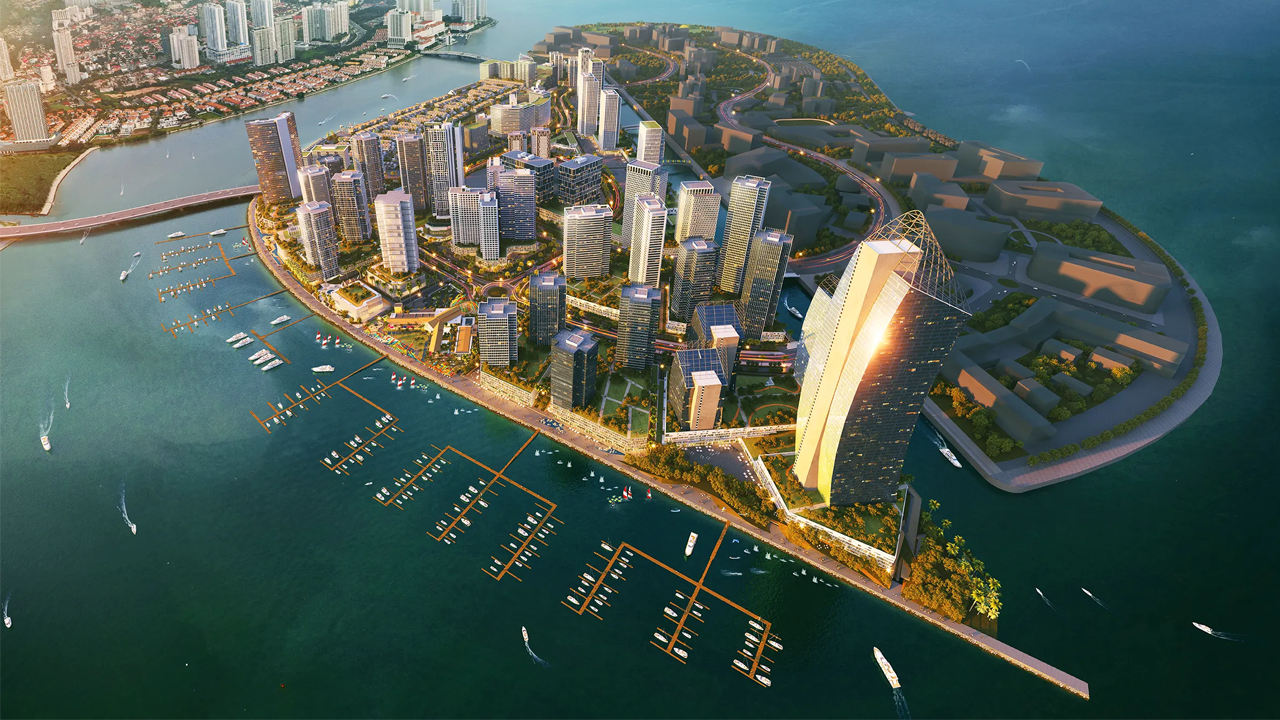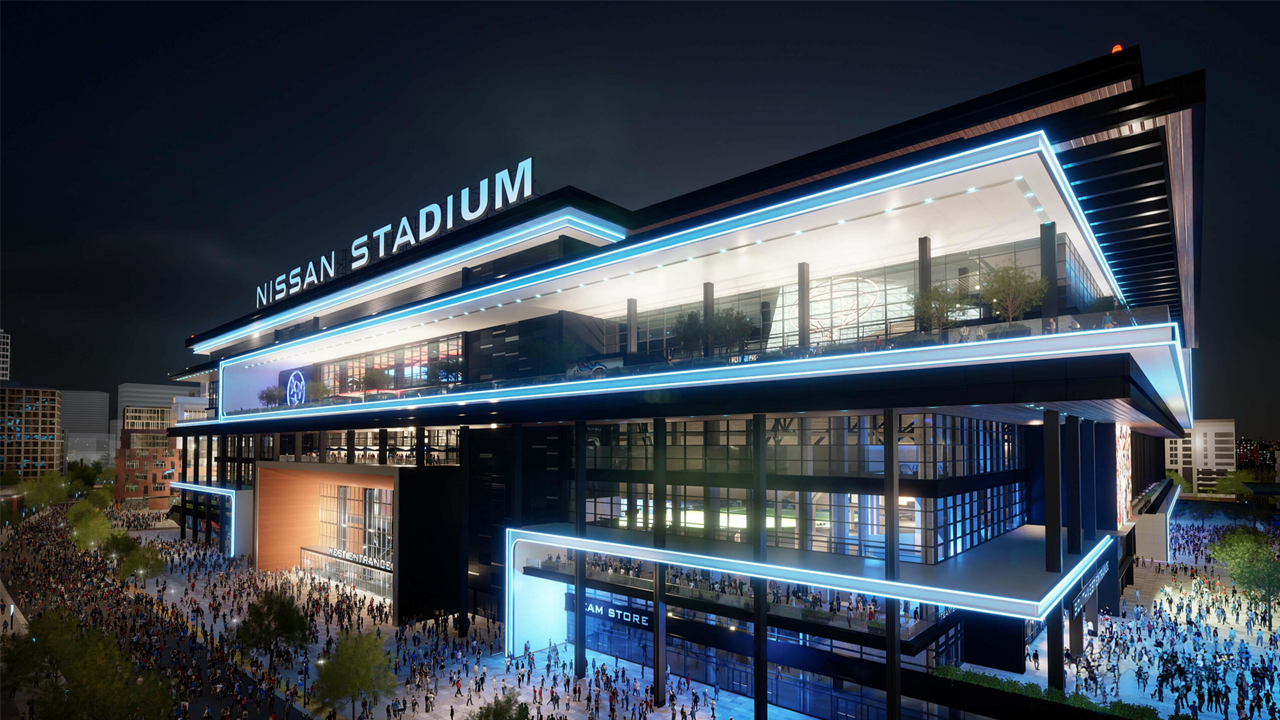The $13BN Plan to Fix Texas’ Deadliest Highway
- Youtube Views 493,338 VIDEO VIEWS
Video hosted by Fred Mills.
INTERSTATE 45 is one of the deadliest highways in America.
It’s Texas’ key artery, running from Dallas all the way down to the island city of Galveston and with more than 100 people losing their lives there in 2023, it’s one of the highest death per kilometre highways in America.
The state has decided enough is enough.
Texas is spending $13 billion to expand, reroute and upgrade a huge section of highways in Houston.
But with I-45 penned in on both sides by residential neighbourhoods, not everyone is happy about the news.
Texas needs to fix the aging interstate but beyond that hefty multi-billion dollar bill, what price will the people of Houston be paying?
Why expand I-45?
The fatalities along I-45 are a clear issue but there’s another reason work is happening now.
Houston sits just 40 metres above sea level, its topography is pretty flat and it sits on soft, clay-based soil - when you consider that, a picture starts to emerge.
The city’s rapid urban development has seen absorbent land built on using notoriously nonabsorbent materials like concrete and so Houston really doesn’t drain well.
Its close proximity to the Gulf of Mexico means Houston’s climate is humid and subtropical and that causes rainy seasons. Mix heavy rain with poor drainage and you’ve got a recipe for disaster.
The highway faces frequent closures and major disruption after heavy rains. Paired with the fact that every few years Texas faces a hurricane and it becomes clear that I-45 isn’t up to the task.
The infrastructure’s aging but worryingly, the Texas Department of Transportation, or TxDOT, says portions of the highway don’t meet current roadway design standards and given its current limitations, it isn’t able to operate as an effective evacuation route during a hurricane.
A highway under pressure
In 1952, the first section, named the Gulf Freeway, opened connecting Houston with Galveston.
By the 1970s the full I-45 route was unveiled, offering a north-south corridor and it couldn’t have come at a better time. The oil boom of the ‘70s saw Texas completely transform.
The state’s economy exploded as people moved to the area to take advantage of a swathe of new jobs and they needed somewhere to live.
As the largest US city without formal zoning restrictions, development in Houston soared. A vast array of residential areas were constructed along the newly connected I-45 and further afield, contributing to rapidly expanding urban sprawl.
But when a city grows that quickly, its infrastructure rarely keeps up. Fifty years later, commuters heading in from the suburbs, city dwellers and visitors passing through the state now combine in a chaotic swirl on I-45 and demand isn't about to decrease anytime soon.
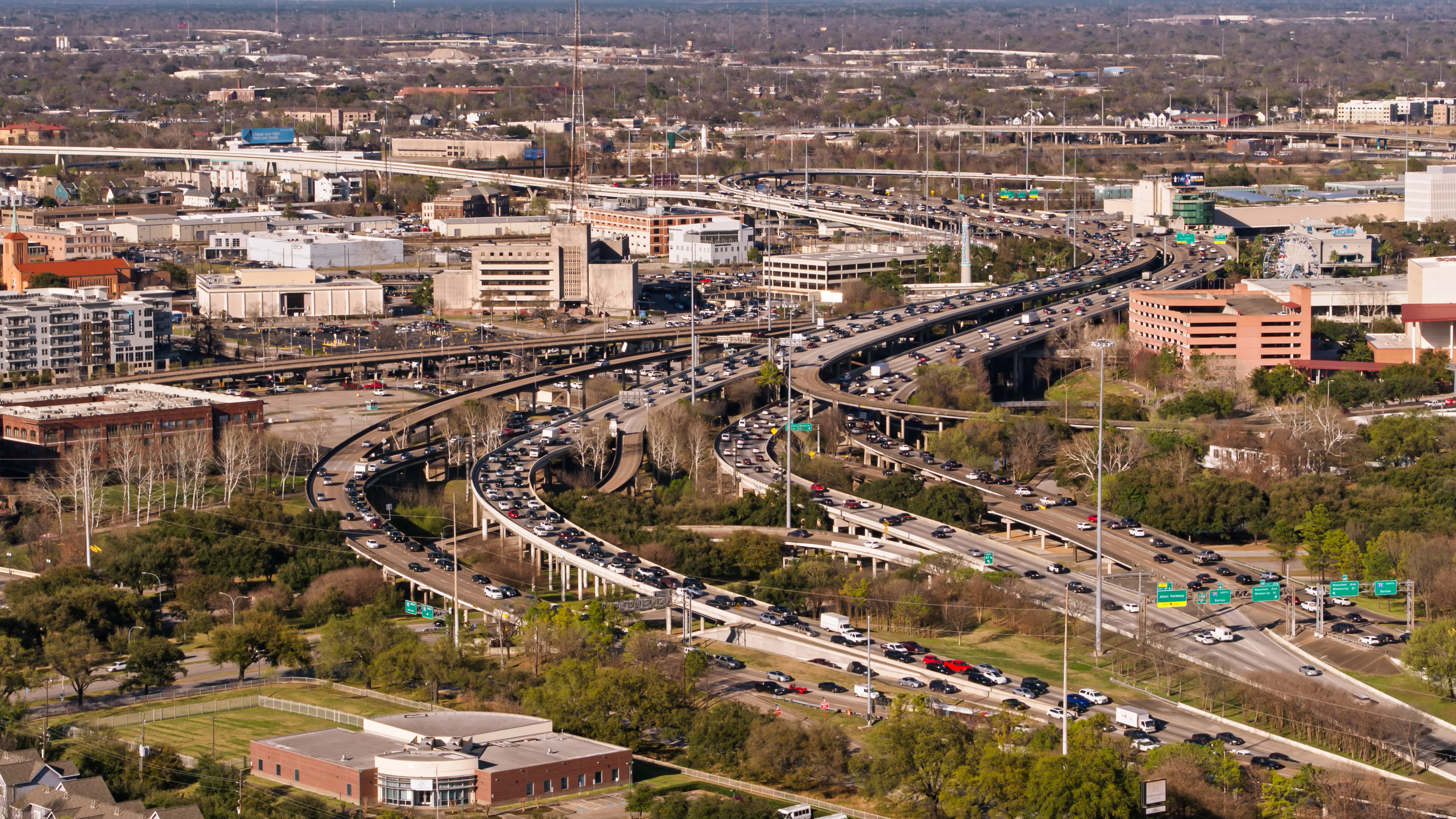
Above: Interstate 45 is a key artery in Houston, experiencing huge volumes of traffic.
TxDOT predicts traffic will increase by as much as 40% along the I-45 Northern Corridor by 2040 and part of the challenge is that America has a love affair with the car.
The interstate highway system is regularly referred to as the greatest public works project in American history, stretching far and wide across deserts and forests, through mountains and cities and it changed the country forever.
Travel, trade and job opportunities opened up on a scale never seen before as America’s marriage with cars and roads grew in strength.
Cities were developed to prioritise motor vehicles and so unless you live in the centre of a city, you almost have to own a car to get around in the US. Your pharmacy, gym, supermarket, your house - they’re all spread out, connected by highways, rather than public transport.
In fact, when the Gulf Freeway was built, it replaced an existing electric train line between Galveston and Houston.
“The Texas Department of Transportation should be investing in transportation and not highways. There’s a joke we say, 'Texas Department of Highways' and not Texas Department of Transportation because that’s all that they do”, said Stephany Valdez, an organiser with the campaign group Stop TXDOT I-45.
Campaigns have been launched for a return to rail - if you go to a Houston protest the slogan, ‘we want trains, not more lanes’ will be left ringing in your ears.
As you might have guessed, some residents are incredibly frustrated by Houston's approach to transport, as Valdez explains:
“It just doesn’t make sense that a place as big as Texas doesn’t have public transportation. I go to D.C. a lot and it has a better transportation system, it can be done in other places as well. People say, ‘no, Houston is too big’ but people who’ve traveled to London say it’s doable there so why isn’t it doable in Houston?”
Earlier this year, a $64 million planning grant for a high speed rail line between Dallas and Houston was cancelled with the Federal Government labelling it a waste of taxpayer funds.
While some US states are slowly removing sections of their highways, Texas has doubled down with the expansion of I-45.
I-45's $13 billion facelift
The plan is to reconstruct I-45 north between Downtown Houston and Beltway 8, an 88-mile toll road that loops around the city. That should expand roadway capacity, reduce congestion, improve safety and enhance mobility.
To achieve the vision, the $13 billion project is split into three segments, each with multiple phases.
Work has already started on segment 3 and the overall goal is to reconstruct the Downtown Houston freeway loop system, aligning highways and improving storm drainage.
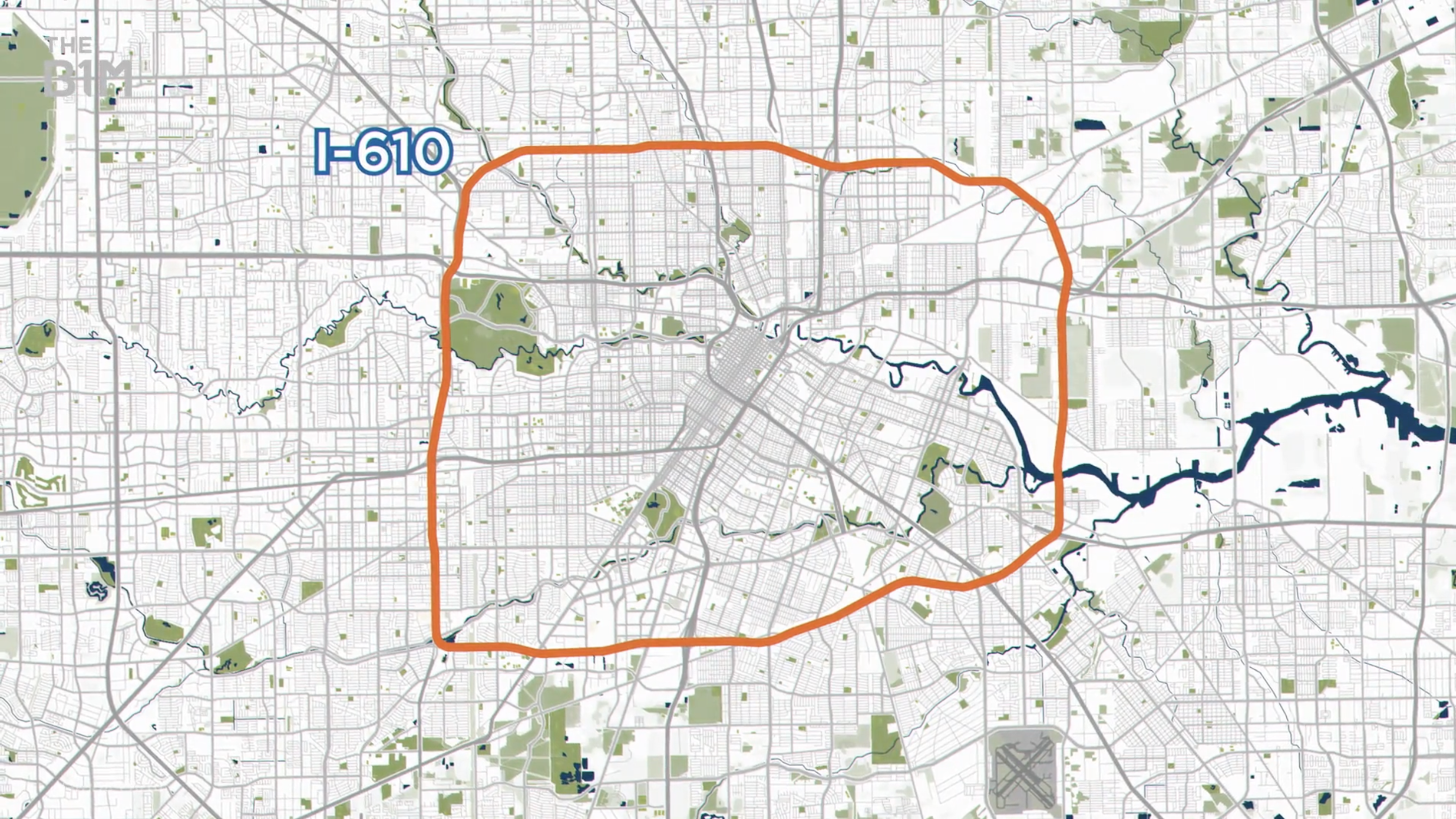
Above: Segment 3 of the project will tackle the freeway loop system or I-610, that surrounds Downtown Houston.
Along St. Emanuel street, east of Downtown and right next to the interstates, storm drainage construction is well underway. The process involves excavation next to the pavement to insert water and sewer pipes.
Once that’s filled in, a second, larger hole is dug out in the roadway to place huge concrete boxes known as culverts.
Their job is to channel water away from the streets and highways during heavy rainfall to an under construction detention pond but while digging up a street is pretty disruptive, it’s just the tip of the iceberg.
This project is an opportunity to expand lanes to monumental proportions and that’s what’s happening to a section of I-69. It’s the first piece of interstate to be widened to accommodate future traffic demand.
Once complete, segment three will see I-45 completely rerouted from west to east Downtown to align with I-69 and I-10. The aim is to streamline traffic flow, cut down congestion and in doing so, offer a safer evacuation route during storms.
The original sections of I-45 in the west of Downtown will be removed and a parkway developed.
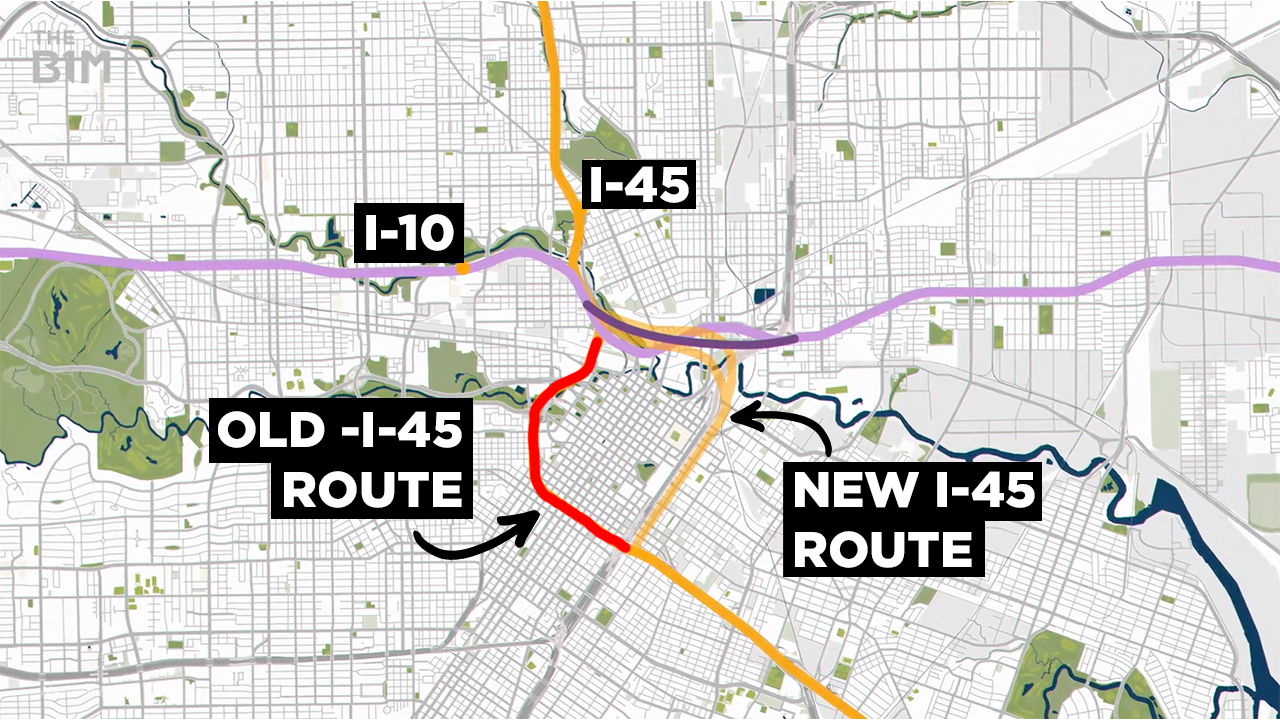
Above: Segment 3 will see I-45 rerouted and aligned with I-69 and I-10.
But that causes a domino effect - with the reconfiguration of I-45, the east-west I-10 will be reconstructed in sections so that it better aligns with the new layout, aiding towards that streamlined goal.
An I-10 interchange will then be constructed and another interchange for the meeting point of I-45, I-10 and I-69 too.
It’s reported these reconstructed highways could be up to a massive 20 lanes wide to accommodate the crazy number of cars that are predicted to flow through the area in the coming years.
But this is just one stage of the work.
Segment 2 will handle the stretch from the segment 3 upgrades up through the I-610 loop, offering a wider connection point through Northside and Downtown Houston.
Lanes will be added to I-45 and a roadway cap is being considered for mainlines to be lowered below ground level.
Further detention ponds will be dug out and existing culverts will be replaced with bridges to improve drainage and lessen flooding on the highways.
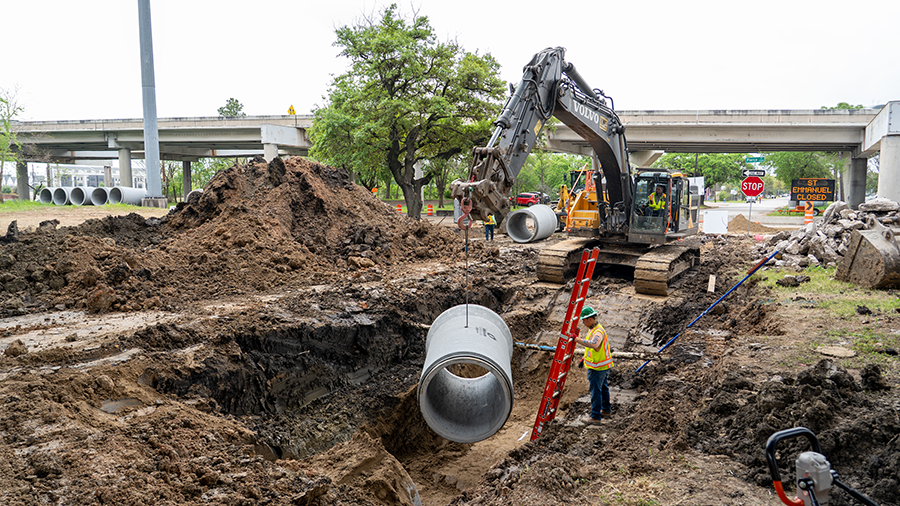
Above: Work is well underway to improve storm drainage in Downtown Houston. Courtesy of Houston Department of Transportation.
Segment 1 will then tackle the section of I-45 that connects segment 2 with Beltway 8. It’ll widen the highway to add more lanes, connections, a new overpass at Blue Bell Road, add yet more detention ponds and widen the bridges over Halls Bayou waterway.
More than a construction issue
To add to the complexity of what’s an already intricate project, this work won’t be taking place in an empty space waiting for development - there are entire neighbourhoods and communities sitting there and right from the very early murmurings of this highway project, pockets of Houston have been anxious.
“This project was clearly racist, definitely going through black and brown communities, going directly through the heart of historic Fifth Ward, going through Near Northside, going through the Northside of Houston and intentionally displacing black and brown people”, said Valdez.
We know about the success of the interstate highway system but the solely positive narrative is beginning to turn.
These roadways were truly game-changing but historically, highways were used as a method of racially segregating areas.
Researchers uncovered evidence suggesting clear government intent to route highways through low-income and minority neighbourhoods and when you look at a demographic map of the city and where construction work is due to happen, Valdez feels the I-45 programme is following a similar trend:
“They think they might be able to get away with this because it is disenfranchised and underserved communities that people won’t listen to. I’ve had experiences where there have been community members that speak Spanish that have no idea that this is happening or that their homes are going to be lost.”
Hundreds of businesses, thousands of homes, schools, places of worship and parkland will disappear, changing lives forever and the question Stop TXDOT I-45 is asking is, why is this project happening at all?
In other areas of the US, highways are being stripped back and there’s a drive to increase public transport provision.
The B1M reached out to TxDOT for a response regarding the project and the department has strongly denied claims of racism or targeted construction work.
"The Houston area continues to grow at a rapid pace. The area has seven million people with a projected population growth of more than 80% by 2050. The I-45 corridor in Houston is home to nine of the top 25 most congested roadways in Texas. With the North Houston Highway Improvement Project (NHHIP), the Houston region will receive more than $43 billion in economic development, reduced travel times, environmental benefits and much more. The NHHIP is more than a decade in the making with extensive local input and regional support. It will bring much-needed and significant improvements to I-45 to enhance safety and mobility as our state continues to see robust population growth and freight traffic. The project will also replace aging infrastructure and help with flooding issues along the corridor while improving routes that could be used during an evacuation.
The NHHIP is the result of nearly two decades of work and collaboration in the Houston community. Through more than 300 meetings with the public – including project area residents, stakeholders, business owners, and other interested parties - TxDOT has listened carefully to the needs of the community. We have gathered and considered numerous ideas and requests regarding the project design. We were certainly able to incorporate many of the suggestions into the plan.
TxDOT has documented a commitment to fund $30 million in direct financial assistance to the affected neighbourhoods to support specific affordable housing initiatives. The eligible initiatives include construction of affordable single-family or multi-family housing and supporting programs that provide assistance and outreach related to affordable housing. TxDOT is currently in discussions with the Texas State Affordable Housing Corporation to administer the funds and is actively working to establish the specifics of the implementation of this grant program, known as the NHHIP Affordable Housing Revitalisation Program. Important to note, is that this commitment is over and above and completely separate from the benefits and assistance TxDOT must provide to residents who have been or will be displaced specific to need for right of way to be acquired for the project. TxDOT’s acquisition and relocation assistance program will provide assistance to residents and businesses that are required to relocate.
In terms of transparency, TxDOT aims to provide clarity and transparency regarding its approach to community engagement. TxDOT is deeply committed to fostering open dialogue and ensuring accessibility to information regarding important infrastructure projects like the NHHIP. These sessions covered information on all three segments, reflecting a commitment to comprehensive community involvement.”
Work on segment three continues while public consultation goes on in the background and once funding is agreed, segment two is planned to start work in 2028 and segment one will follow in 2032.
The project just goes to show how complex building major infrastructure in America really is.
It’s rarely as simple as getting each stakeholder in a room to thrash out a discussion, emerging hours later with a plan that everyone can get behind.
Each party has its own idea of what’s most important and those realities rarely align.
As we navigate this bumpy chapter in America's transit journey, construction may be at its heart but the wider issues go a whole lot deeper.
Additional footage and images courtesy of KHOU 11, Texas Department of Transportation, Cassette2Go, David Ray, tack122, Third Coast Drone, J.S. McDuff, Kelly, FOX 26 Houston, ABC13 Houston, KPRC 2, PublicResourceOrg, United Artists, Columbia Pictures, Road Movies Filmproduktion GmbH, CNN, TheTransAmSeries, American Petroleum Institute, BC History and FOX 13 Tampa Bay.
We welcome you sharing our content to inspire others, but please be nice and play by our rules.
